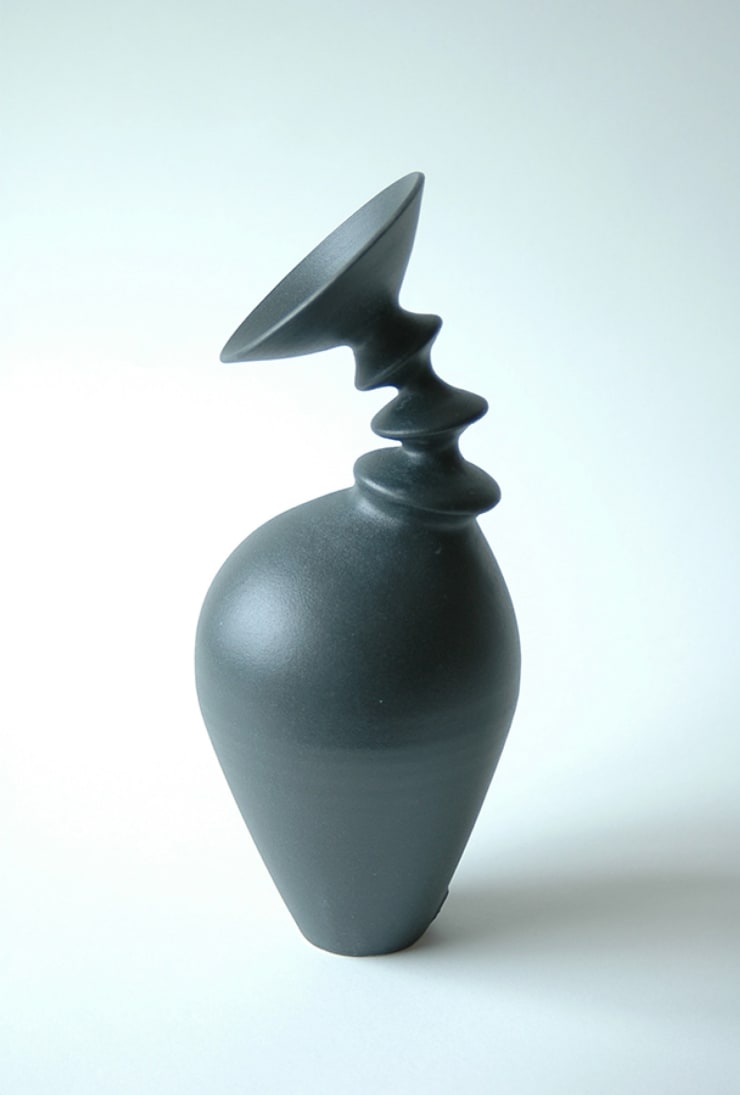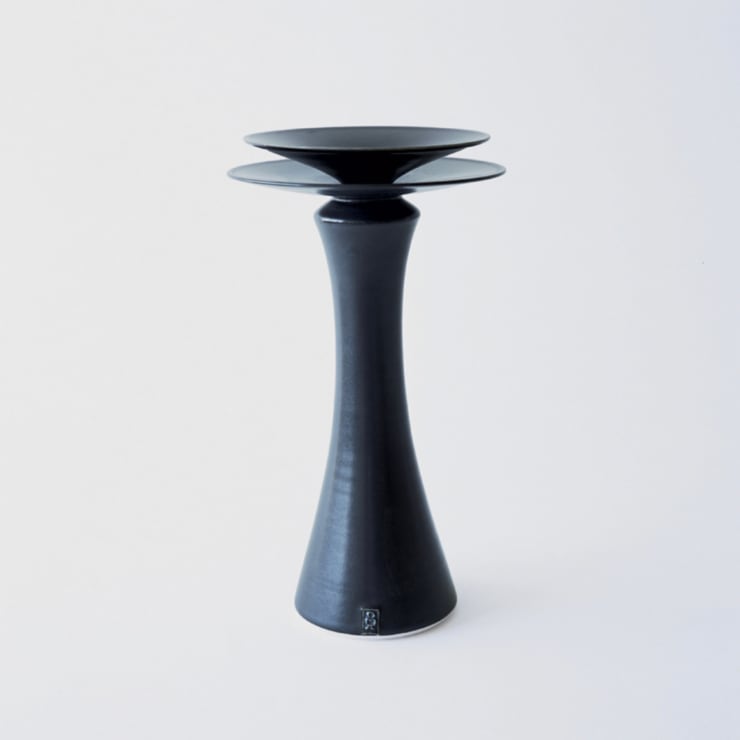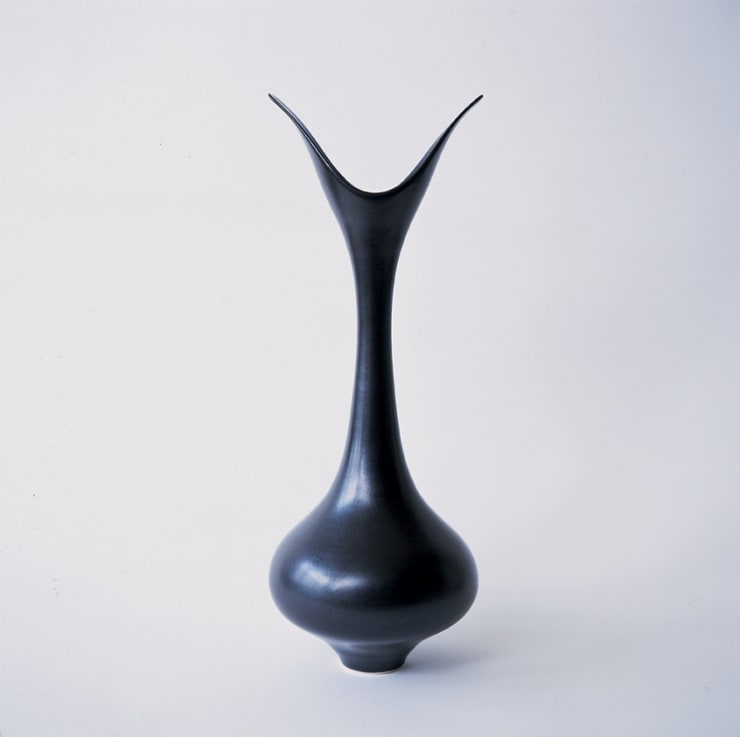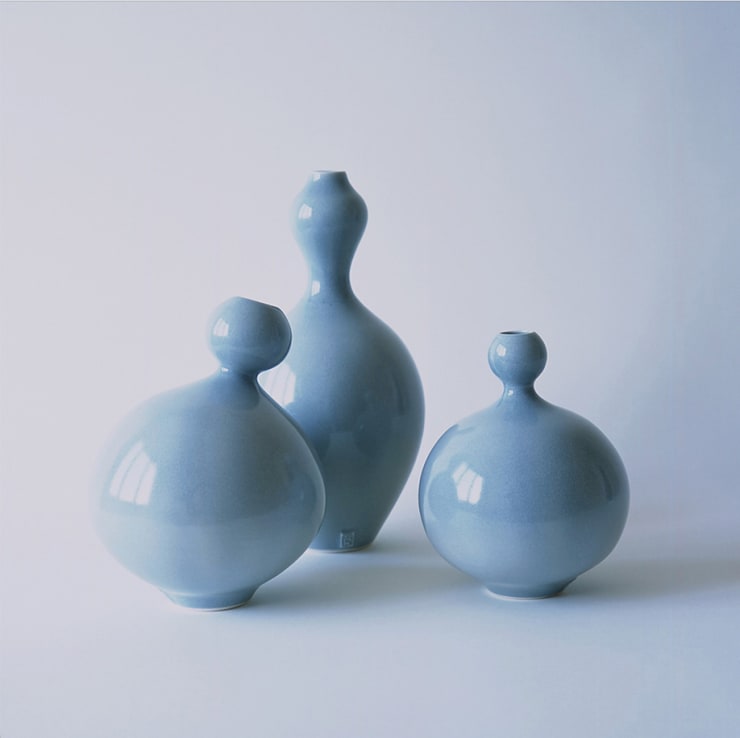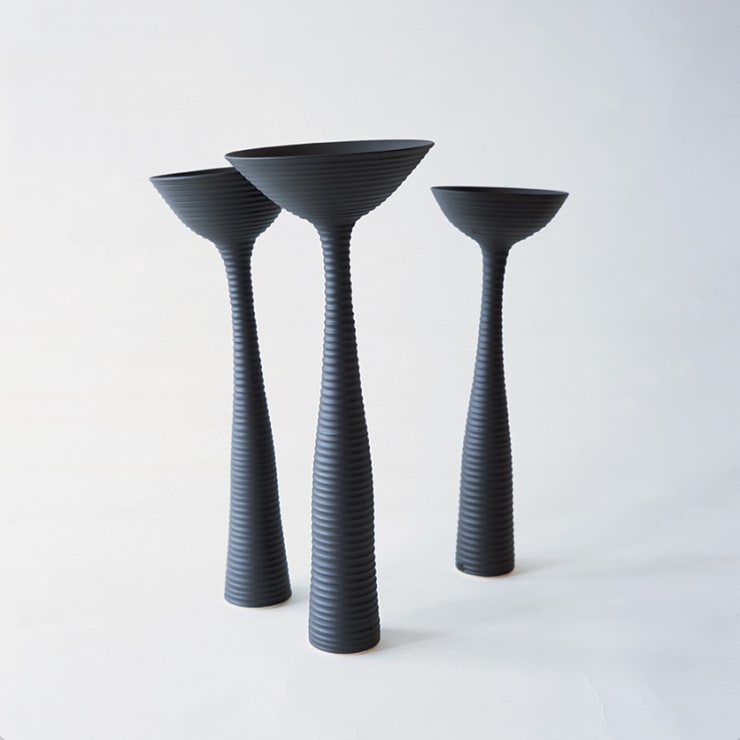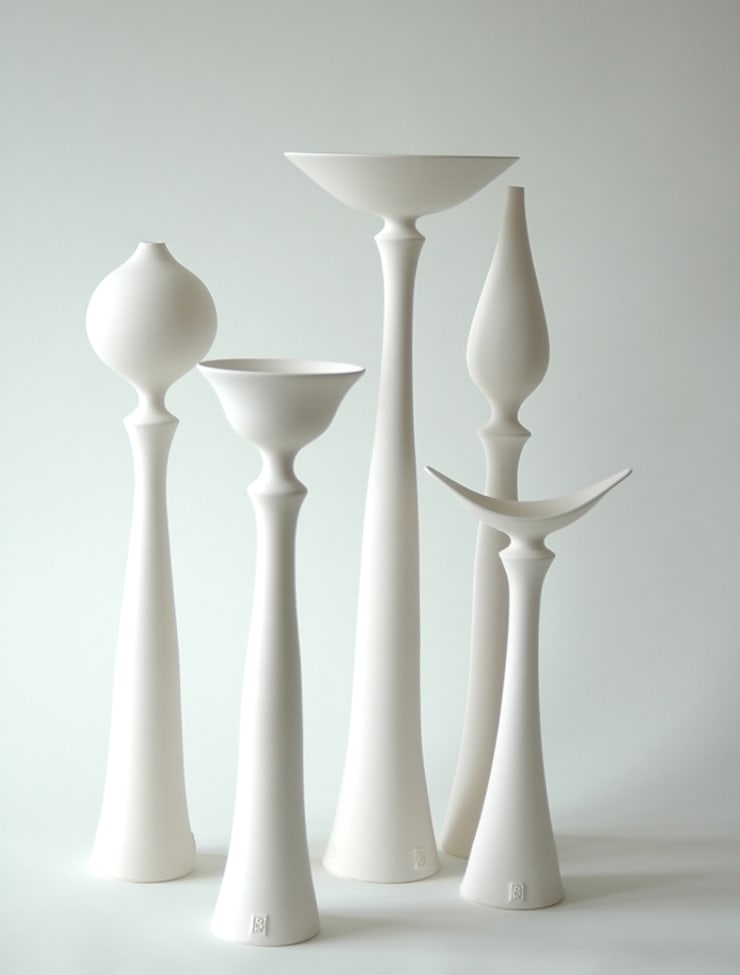Vivienne Foley (Ceramics & Bronze)
-
OverviewThe excitement and challenge for me is to produce flowing, harmonious forms from a process fraught with interruption. I try to factor in all the variables knowing that during drying, glazing and firing, the pieces will take on a life of their own and that no two forms are ever the same.VIVIENNE IS SELF-TAUGHT AND ESTABLISHED HER FIRST STUDIO IN IRELAND IN 1979
Her porcelain is organic and delicate, creating a sense of complex harmony in form. Although she takes influence from her study of Chinese porcelains, her work is undoubtedly contemporary and unique. Her technique involves combining thrown and constructed elements and pushing the limitations of her material. While some of her pieces fulfil the functional purpose of a vessel, her work is truly appreciated purely in a sculptural context.
The most recent development of her practice is a series of bronze sculptures based on her porcelains, exploring the characteristics of two different materials which share ancient and dynamic histories.
Her ceramics are held by the National Museum of Ireland and the Ulster Museum collections. During her term, President Mary Robinson of Ireland acquired numerous works of Vivienne's for presentation to Heads of State, Ministers and Ambassadors. Prince Faisal of Saudi Arabia and former US President Bill Clinton received these gifts.
Further collections include:York Museums Trust, UKLeeds Museums and Galleries, UKSouthampton City Art Gallery, UKCrafts Council of Ireland, DublinLimerick City Art Gallery, IrelandRoyal Household, SwedenIrish Embassy, BerlinChaim Hertoz - former President of IsrealJacques Chirac - former President, FranceAlliance Capital, LondonRolex, LondonCoutts Bank, LondonFord, UKVivienne Foley Porcelain, a comprehensive survey, was published in November 2007. Containing 140 pages with 100 illustrations, the book includes a foreword by Audrey Whitty, Head of Collections and Learning at the National Museum of Ireland.
Ceramics £750 - £5,000
Bronze £6,500-£12,000Please email the gallery for information about works currently for sale -
Works
-

Audrey Whitty Essay
Audrey Whitty is Head of Collections and Learning at the National Museum of Ireland. Prior to 2019, she was Curator of Ceramics, Glass and Asian Collections at the same institution.When Vivienne Foley established her studio in Ireland at Whitegate, Co. Clare, in 1979, it marked a significant turning point in the history of 20th-century Irish ceramics. She was the first female artist working in the medium of porcelain to independently set up her own workshop, calling to mind the I 920s/30s Irish ceramic artist Kathleen Cox, even though Cox had worked predominantly in earthenware. Acquisition by the National Museum of Ireland in 1982 of a bowl with barium glaze confirmed her status as a leading light of the Irish applied arts world, in no small part due to the fact that accession of contemporary material by the HMI throughout the 1980s had been intermittent.Since 2000 this situation has been reversed, proving all the more the importance of the original Vivienne Foley purchase by the institution. Despite her obvious characteristic of vessel development involving abstract proportions and line, her move to sculptural work over the past decade is, in many respects, quite revolutionary. The simple change from vertical to the horizontal placement of form in association with the play of light has been stunningly achieved, particularly in relation to the Strange Attractor series and ‘Long Ribbed Forms’. All of these more installation-based pieces are grounded, as with all of her artistic output, in the study of fine Song Dynasty wares. It is in this area that her artistic legacy in an Irish context will be strongest. Although there are Irish artists working in clay, such as Deirdre McLoughlin and Robert Lee, under strong Asian influence, it is primarily one of Japanese aesthetics, whereas Foley’s oeuvre is wholly Chinese in origin. Another overriding effect of the grace and sleekness evident in her work, as remarked upon by Fiona Sibley, is the modernism of Brancusi's sculpture. It is the realisation of this merging of Far Eastern material culture with art of the avant-garde that lingers in the psyche of the spectator, and is perhaps her most profound gift to the history of the subject on a European level. -




